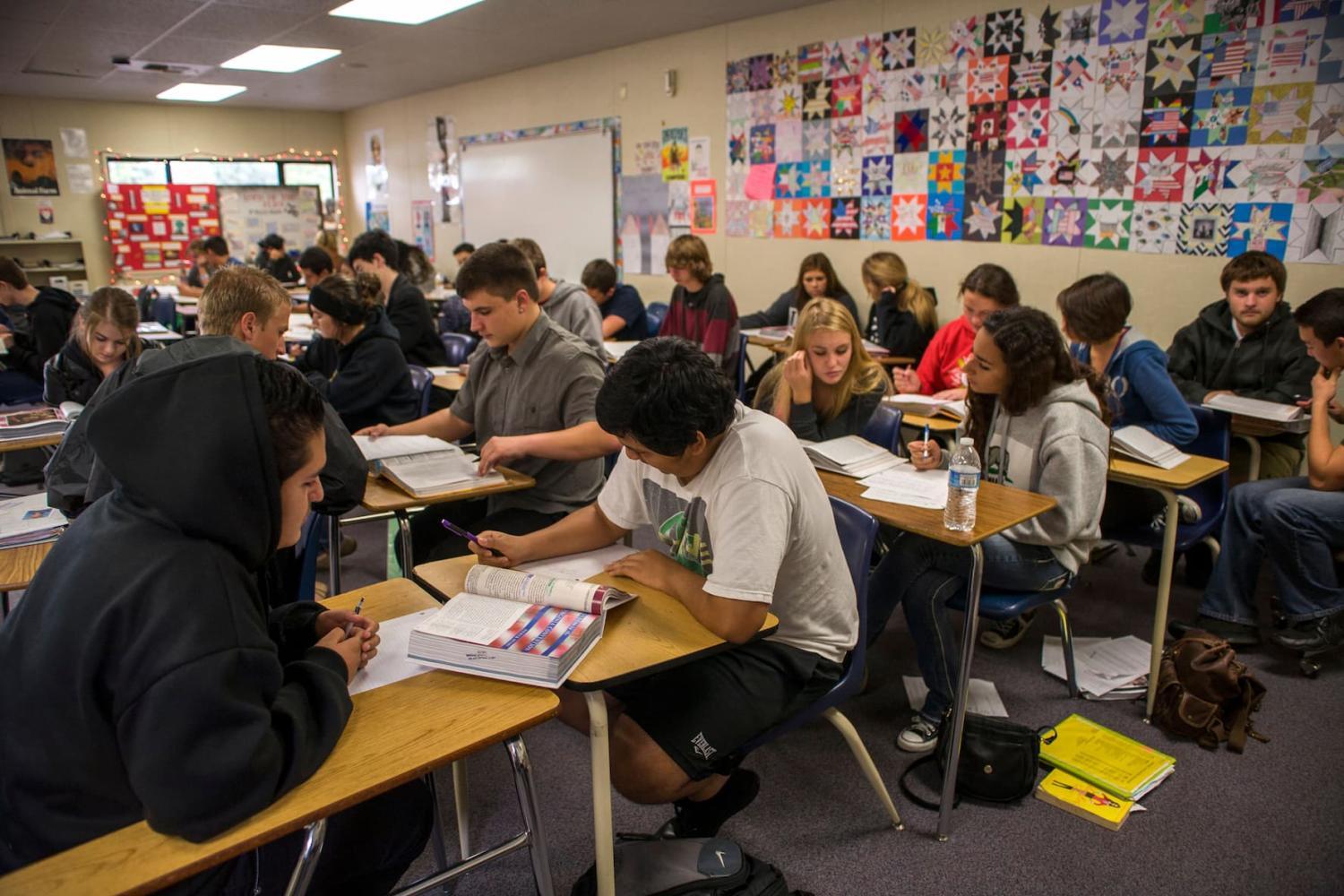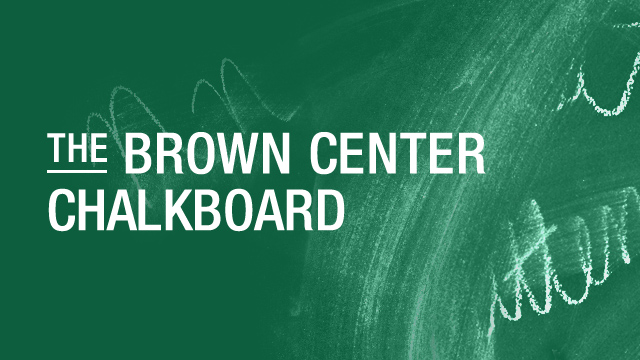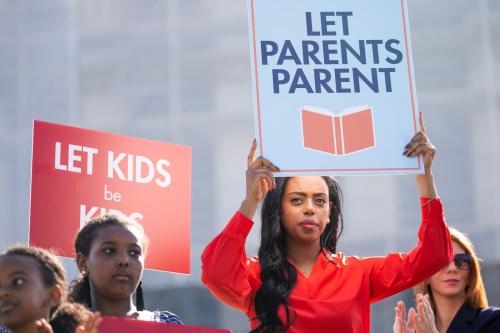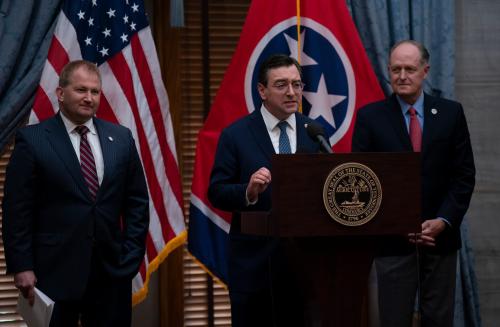Do American public schools promote a biased political perspective—or even indoctrinate students in a certain belief system? For many Americans, their answer to this question could define their preferences for education policy. It stands to reason, for example, that someone who believes that educators are inappropriately espousing their political views might support a slash-and-burn agenda on public education funding.
Historically, one could argue that education garnered more bipartisan agreement than most other policy areas. Today, however, schools are a political battleground for a polarized electorate. There has been contention at the local, state, and national levels surrounding both oft-controversial education topics—like school choice, social studies curriculum, and LGBTQ+ issues—and more mundane areas, like teacher retention strategies. We have seen an erosion of trust in public education and evidence of partisan divides on what we think the goals of public education should be.
To learn more about what Americans—and, specifically, U.S. students and adults—believe about politics in schools, we went and asked them.
Student and adult perceptions of political bias in schools
We conducted two nationally representative polls on partisanship in education. The first, conducted in May 2024, surveyed 857 high school students, providing a glimpse of students’ perceptions of how their teachers engage with political topics and bias. The second, conducted in October and November 2024, surveyed 1,000 adults (about 27% of whom are parents of children aged 18 or younger). This allows us to contrast first-hand student viewpoints with the perspectives of U.S. adults who are perhaps more detached from schools.
We asked respondents whether, in their view, “public schools tend to promote: 1) liberal political viewpoints; 2) politically neutral and/or balanced viewpoints (e.g., both liberal and conservative viewpoints); or 3) politically conservative viewpoints.”
Most adults believe that America’s public schools present neutral or balanced political viewpoints (Figure 1). However, there are real differences by political affiliation. More than two-thirds of Republicans believe that public schools promote liberal viewpoints, while Democrats and Independents see a more neutral or balanced approach. Only about 17% of Democrats believe that public schools promote conservative viewpoints, slightly higher than the national average.
Interestingly, high school students perceive this question differently from adults (Figure 2). A larger majority of students (67%) report balanced political messaging and, unlike adults, conservative and liberal students respond very similarly to one another. Both liberal and conservative students were about twice as likely to report a liberal lean than a conservative lean, though majorities of both groups reported neutral or balanced approaches.
Confidence in US public education
We administered our adult survey both just before and just after the 2024 election to the same set of respondents. This allows us to identify shifts in the public’s views in the aftermath of the election’s outcome.
Before the election, 54% of adults indicated that they’re worried about the direction of the nation’s public schools (Figure 3). Following the election, a similar majority (56%) of adults indicated worry. However, the underlying makeup of this majority reflects sharp partisan differences from before to following the election. Worry among Democrats grew significantly, from 44% to 68%. Worry among Republicans shrank, from 66% to 46%, following President Trump’s reelection.
Federal role in public education
Amid changes in federal involvement in public education, we also asked adults whether the federal government should adopt a larger or smaller role and influence in public education (Figure 4). On the whole, Republicans favor a smaller role (60% smaller vs. 27% larger) and Democrats a larger role (49% larger vs. 17% smaller).
However, survey questions like these may assume that people have a fairly accurate understanding of the federal government’s role in public education. That may not be the case.
To get a sense of the accuracy of adults’ beliefs (at least on one question), we asked respondents about the sources of funding for PK-12 schools.
In 2021-22, amid $190 billion in federal ESSER stimulus funding, the federal government supplied 13.7% of total public education revenues, up from 7.8% in 2018-19. Despite these relatively modest proportions, on average, adults guessed the federal government provided 31% of education revenues. That’s 4.5 times that of a normal funding year and 2.5 times that of an extraordinary pandemic funding year. Republicans’ and Democrats’ responses to this question were similarly far off, indicating that—unfortunately—misperceptions of reality might be one area of commonality across parties.
What public perceptions mean for US schools and education policy
Stepping back, our findings highlight an important disconnect between adults’ perceptions and students’ on-the-ground experiences. Adults suspect political biases in schools that many students do not see themselves. If adult preferences for public education are informed by narratives that stray from actual student experiences (based on what adults see on social media, cable news, etc.), it could be hard for policymakers to orient their legislative efforts to address the most pressing issues in public education.
Notably, too, many adults seem to lack knowledge about the federal government’s role in education. As a result, proposed education policies may reflect current political narratives rather than realities of classroom conditions. As education policy increasingly becomes part of the political culture wars, this trend could drive education policy further away from its historically bipartisan—or at least less overtly partisan—roots.
The Brookings Institution is committed to quality, independence, and impact.
We are supported by a diverse array of funders. In line with our values and policies, each Brookings publication represents the sole views of its author(s).








